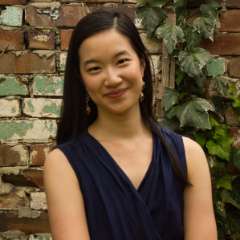Audiences always love a good Marriage of Figaro. This time it’s a welcome revival of Sir David McVicar’s humanly warm and brilliantly naturalistic production, directed by Andy Morton, which first hit Australian stages in 2015 and was last seen in 2019.
McVicar has more than one Figaro under his belt, but for this production I always say I “went for the Mozart, stayed for the lighting”. I don’t usually gush about lighting design as the primary feature of a performance, but here designer David Finn creates pure magic. Long tapering streams of sunlight pour into the Count’s palace, so clearly high summer sunlight and so clearly bright country sunlight you can almost hear the bees (then the overture begins and you sort of do). Everything shines brightly on Jenny Tiramani’s glowingly detailed costumes and country-coloured set. The combination of colour and sunlight is so delicious you want to bottle it up and take it home.
Sunlight is fitting for Figaro because in McVicar and Morton’s hands it’s a sunny sort of opera. The jokes are played up – every door has a huddle of eavesdropping servants behind it (strikingly clad in Tiramani’s cornflower blue), Cherubino has hay fever, the Count is remarkably casual with dead hares, Figaro manfully tries and fails to whistle, and there’s a gardener traipsing round in muddy socks on the marble floors. Though the audience was a bit diminished due to the Omicron wave, the laughs were as loud and frequent as any full house. To the point where, after Act 3’s famous sextet, my guest remarked, “This actually reminds me of Saturday Night Live.”
The humour and energy are also a credit to the cast because Figaro is an ensemble-driven character affair. Homegrown star Stacey Alleaume revived her Susanna. As always, she was a winningly vibrant stage presence, well cast as Mozart’s sassy heroine. She was genuinely funny and fierce in Act 3’s “Riconosci in questo amplesso”, while her “Deh vieni non tardar” was touchingly lyrical, sung with intriguingly intimate staging from behind a gauze curtain as we see the Countess gesturing from the other side.
Alleaume had a youthful, passionate chemistry with her Figaro, the up-and-coming Venetian bass-baritone Tommaso Barea, making his Opera Australia debut. Barea was the scene-stealer of the evening, depicting Figaro with a charisma and energy that was compelling and warmly humorous – he has excellent comic timing. Barea also sang with a fluid spontaneity, unafraid to up the excitement by injecting emotional shots of colour and texture into his voice. This was particularly effective in “Non più andrai”, which began with Figaro mocking the hapless Cherubino, but ended with him snarling at a bust of the Count.
The villainous Almaviva himself was performed by the compelling Italian baritone Mario Cassi, also in his Opera Australia debut. He was a suitably imposing figure, with a powerful voice that had a burnished resonance in the top register. Listening to Cassi is very satisfying, and his Count – without ever breaking character as the serious villain – was a polished, authoritarian foil to the rest of the comic ensemble.
The vocal standout of the performance was the Bolshoi soprano Ekaterina Morozova, singing the Countess, the third OA debut of the evening. A glamorous stage presence, Morozova also has a beautifully lush tone and a sophisticated sense of phrasing and shape. Her “Porgi amor” and “Dove sono” were real musical highlights, sung with a rich warmth and poignant vulnerability.
The four leads were carried by a fantastic supporting cast. As Cherubino, Agnes Sarkis imbued her rich mezzo-soprano with the trembling energy of adolescence. Sian Sharp was vocally accomplished and energetic as a slightly younger Marcellina, boasting strong chemistry with Richard Anderson’s warm and likeable Bartolo. OA tends to cast up-and-comers as Barbarina, this year giving us Danita Weatherstone from their Young Artist Programme. Her Barbarina had a flirtatious, brash air, channelling vibes of Lydia from Pride and Prejudice. Benjamin Rasheed (Basilio), Stuart Haycock (Curzio) and Andrew Moran (Antonio) completed the ensemble with lively theatrical detail, strong comic support and accomplished singing. Andrea Molino conducted the Opera Australia Orchestra with a refreshingly brisk and vibrant tempo, demonstrating a masterfully controlled balance not only within the orchestra itself, but also between the pit and stage. An energetic, invigorating performance. Mozart’s Figaro, with its sublime music and masterful characterisation, deserves no less.




